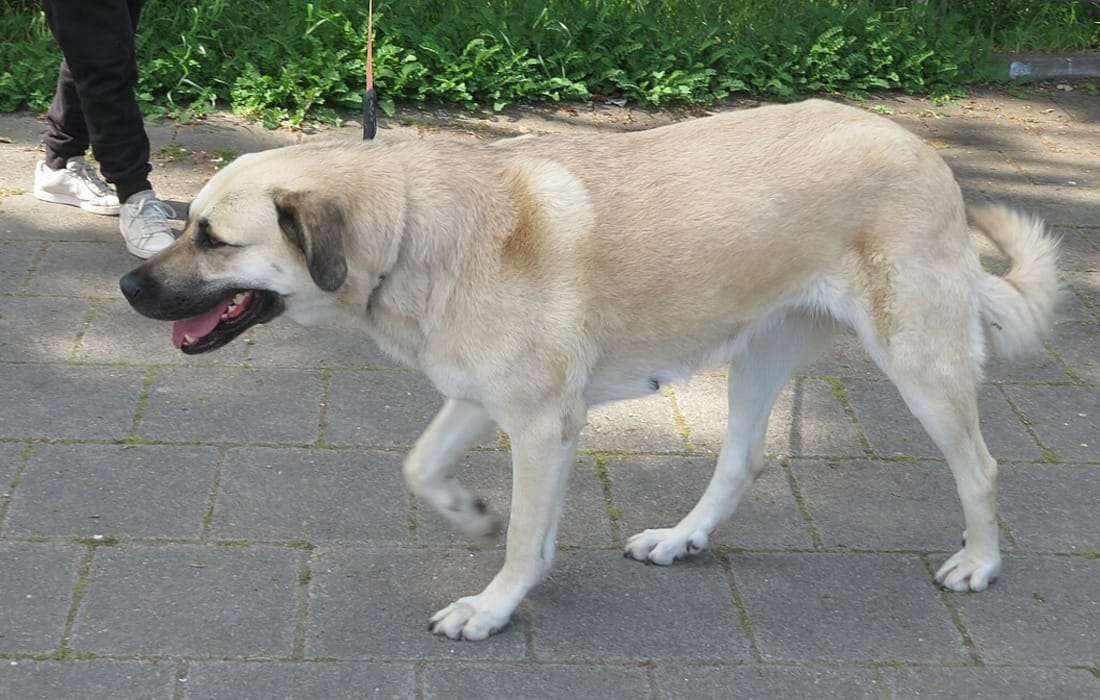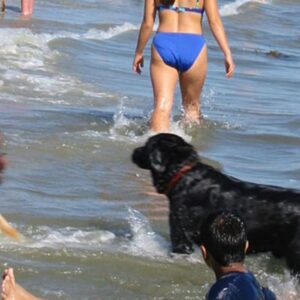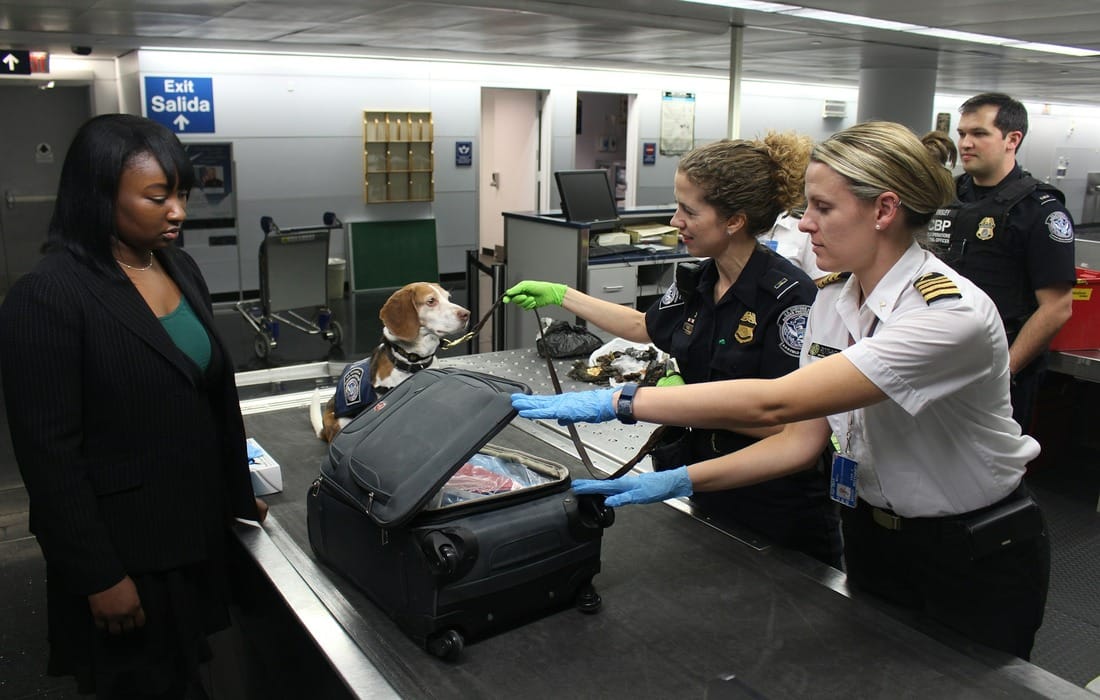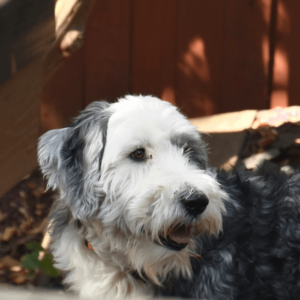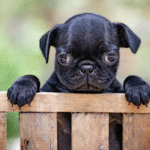Aggression in dogs often sparks strong emotions, especially for those who want the best for their furry friend. Even if Breeds like Pitbulls, Rottweilers, and German Shepherds often grab attention for their strength, we have to be aware that behavior is shaped by much more than breed. Dogs, like children, tend to reflect their owners’ personalities. As a dog parent, I believe proper training, early socialization, and a loving home are key to preventing aggression. Whether you’re a dog owner or considering a breed with a strong reputation, it’s important to understand what truly shapes a dog’s behavior. In this post, I’ll explore how responsible care can make all the difference.
What Makes a Dog Breed Dangerous?
When people think about “dangerous” dog breeds, images of snarling faces and menacing postures often come to mind. But what really sets some dogs apart as potentially dangerous? It’s more complicated than just their breed alone. A dog’s temperament is the result of a multifaceted combination of genetics, training, environment, and even their health. Each of these factors plays a role in shaping a dog’s behavior and how it interacts with the world. By breaking down these components, we can better understand the root causes of aggression and how to prevent it.
The Role of Genetics
Dogs are bred for specific traits, and in some cases, that includes characteristics like protectiveness or assertiveness. For example breeds like Rottweilers and Pit Bulls have historically been bred for guarding or work purposes, which can make them more predisposed to behaviors that could be perceived as aggressive. Genetics dictate not only a dog’s size and strength but also play a role in its natural tendencies.
It’s important to understand that genetics don’t make a dog inherently dangerous. Instead, they provide a foundation. For example, certain breeds may have a higher prey drive or greater territorial instincts, but those traits are not the sole determinants of behavior. How we raise and train our dogs plays an equally critical role in shaping their personalities.
For more on the connection between genetics and behavior, this article provides some fascinating insight What Makes a Dog Dangerous: The Truth Behind ‘Dangerous Breeds’.


The Impact of Training and Socialization
One of the most surefire ways to help your dog avoid aggressive tendencies is through proper training and socialization. Early exposure to different environments, people, and other animals can teach dogs to feel secure and confident in various situations. A well-socialized dog is less likely to react defensively or aggressively because it understands these situations aren’t a threat.
Positive reinforcement methods are particularly effective. Treats, praise, and consistency can teach your dog to respond to commands and feel comfortable around new stimuli. It’s also vital to work on impulse control with breeds known for their power and strength, ensuring they react appropriately to unfamiliar situations.
If you’re struggling with a dog showing signs of aggression, this guide can help shed light on how socialization might improve the situation: Tips for Training an Aggressive Dog.
Environmental and Life Experiences
Environmental factors are key components in a dog’s overall behaviour. When a dog is raised in an environment full of stress, neglect, or abuse, it’s no surprise that it may grow to exhibit aggressive behavior. Dogs are products of their experiences just like people. A loving and structured environment, filled with positive reinforcement, routine, and care, provides essential stability.
Some examples of environmental factors influencing aggression include:
- Neglect or lack of attention: Dogs left alone for long periods may develop anxiety or frustration that could manifest as aggression.
- Harsh punishment or abuse: Dogs who have been physically punished may become fearful and react aggressively when feeling cornered.
- Unpredictable surroundings: Moving homes, chaotic family dynamics, or loud, unsafe environments can heighten stress levels in dogs.
Consistency and love in your home life can go a long way toward shaping a dog’s temperament. Addressing trauma or negative surroundings often requires the assistance of a professional dog trainer or behaviorist.
Health and Medical Issues
At times, aggression in dogs stems not from their genetics, training, or environment but from underlying medical issues. Pain, discomfort, or cognitive dysfunction can make even the friendliest dog react aggressively. For example, a dog experiencing pain from arthritis or recovering from surgery might lash out if touched in a sensitive area.
Other medical issues that can contribute to aggression might include:
- Thyroid imbalances, particularly hypothyroidism
- Vision or hearing loss
- Neurological disorders
- Nerve pain or injuries
Routine vet checkups are critical for identifying and addressing health issues before they lead to behavioral changes. If your dog suddenly begins showing unexpected aggression, consider scheduling a health screening to rule out medical problems.
By understanding these key elements—genetics, training, environment, and health—you can get a better picture of what truly makes a dog breed “dangerous.” Don’t forget, it takes the combined effort of responsible parenting and appropriate care to ensure your dog is set up for success.
Most Aggressive Dog Breeds: A Factual Overview
While it’s tempting to attribute a dog’s aggressiveness solely to its breed, the reality is that behavior results from a mix of genetics, environment, and upbringing. However, certain breeds do have characteristics that can make aggression more likely when not properly trained, socialized, or cared for. Here’s a look at some of the breeds most often associated with aggressive behavior, along with important insights on their traits and needs.
Pitbulls: Loyal Yet Misunderstood
Often at the center of debates, Pitbulls hold a complex reputation. This breed is known for its strong loyalty to its family. Pitbulls were originally bred for bull-baiting and later for farm work, which required a high level of determination and strength. While these traits make them excellent companions for responsible owners, they can also lead to problematic behaviors if they’re neglected or not properly trained.
It’s worth noting that Pitbulls frequently appear in reports of dog attacks. Behavior often stems from factors like irresponsible breeding or a lack of socialization rather than the breed itself. Proper training and understanding of their needs can go a long way in reducing incidents. For more information, the ASPCA position on Pitbulls sheds light on the importance of responsible ownership.
Rottweilers: Protective and Powerful
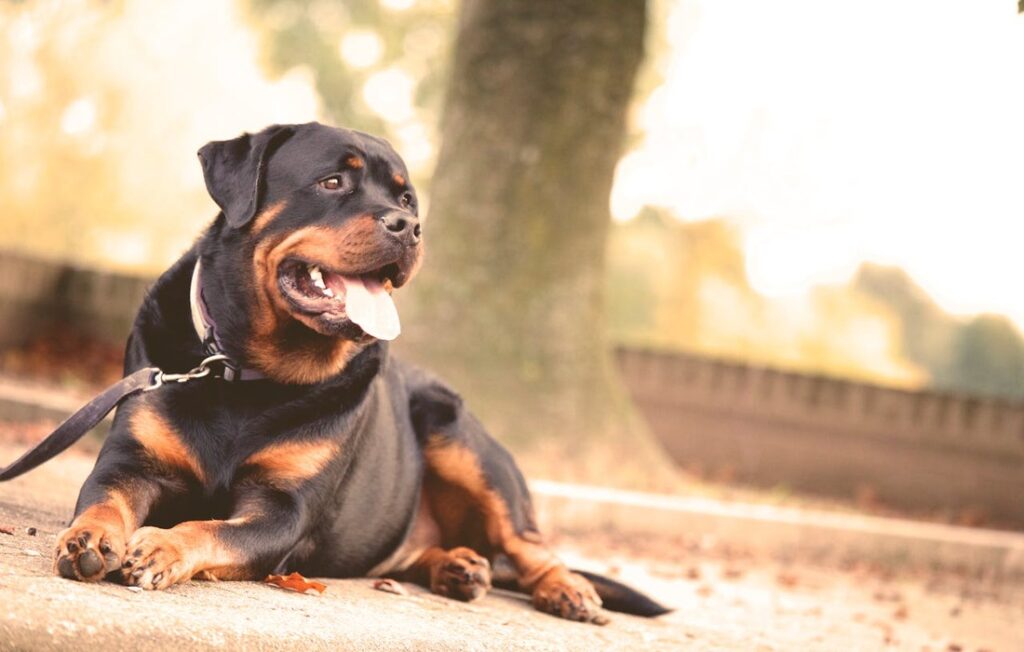

Rottweilers are famous for their protective instincts. They were originally used as herding dogs, guarding livestock and property. Their size and strength make them powerful protectors, but this also means they require an experienced owner who can handle their natural assertiveness.
Without proper training, Rottweilers may become overprotective and even territorial, which can heighten the risk of aggressive behaviors. However, consistent guidance and strong leadership can help prevent these issues. Their loyalty and loving nature make them excellent family dogs when placed in the right hands. For more about their instincts and needs, check out this Rottweiler protective instinct guide.
German Shepherds: Intelligent Yet Complex
German Shepherds are celebrated for their intelligence and versatility, often serving as police or service dogs. Ironically, their intelligence can also present challenges in untrained homes. A German Shepherd without proper guidance may behave unpredictably, especially if bored or improperly socialized.
These dogs are quick learners, but they also need clear boundaries and mental stimulation. Their natural protectiveness combined with inadequate training can result in over-assertiveness or misinterpreted aggression. A structured routine with plenty of positive reinforcement ensures they remain well-behaved companions. This German Shepherd training guide provides actionable advice for better understanding their unique needs.
Chow Chows: Aloof and Territorial
Chow Chows are as adorable as they are enigmatic. Their lion-like manes and calm demeanor often mask an aloof personality. This breed tends to form a strong bond with a single family member but can remain wary of outsiders.
Territorial tendencies are common among Chow Chows, which might result in aggression when strangers approach their domain. Early socialization and clear boundaries are critical when raising this breed. For tips on managing territorial aggression, you can explore Chow Chow-specific behavioral insights.
Doberman Pinschers: Fearless Guardians
Dobermans were bred for personal protection, making them one of the most alert and trainable breeds. Their sleek, muscular frame allows for agility and speed, making them ideal for police and military work. While their loyalty is unmatched, an untrained Doberman may exhibit aggressive tendencies toward unfamiliar people or animals. Structured training and leadership help them thrive as protective yet obedient companions.
Bullmastiffs: Gentle Giants with a Guarding Instinct
Bullmastiffs were originally bred to guard estates, combining the size of a Mastiff with the agility of a Bulldog. Despite their calm nature with family members, their natural guarding instincts can lead to aggression if they feel their territory is threatened. Proper training and early socialization ensure they remain confident yet controlled guardians.
Cane Corsos: Dominant and Devoted
This ancient Italian breed was developed for guarding property and hunting large game. Cane Corsos are intensely loyal but require an experienced owner who understands their dominant tendencies. Without firm leadership, they can become overly protective or aggressive toward unfamiliar people or animals. Training, socialization, and proper exercise are essential for a well-balanced Cane Corso.
Akitas: Independent and Strong-Willed
Originally bred for hunting and guarding in Japan, Akitas are known for their loyalty and dominance. They can be reserved around strangers and aggressive toward other dogs, making socialization essential. Their independent nature requires an experienced owner who understands how to establish leadership.
Alaskan Malamutes: Strong-Willed and Stubborn
Bred as sled dogs, Malamutes are powerful and independent. While not typically aggressive toward humans, they have strong prey drives and may show dominance toward other animals. Proper training and an active lifestyle help keep them well-behaved.
Huskies: High Energy with a Stubborn Streak
Though Huskies are known for their friendly nature, their independent and energetic personality can lead to behavioral issues. They have a strong prey drive and may become destructive without proper exercise and training. While not typically aggressive, their stubbornness requires an experienced handler.
Presa Canarios (Canary Dogs): Dominant and Powerful
Bred for guarding livestock, Presa Canarios are strong, confident, and protective. They require an owner with experience handling dominant breeds, as their territorial instincts can make them aggressive if not properly trained and socialized.
Wolf Hybrids: Unpredictable and Wild
A mix between domesticated dogs and wild wolves, Wolf Hybrids can be difficult to train and unpredictable in behavior. Their instincts make them less suited for traditional pet life, and they require specialized care, training, and containment to prevent aggressive tendencies.
Smaller Breeds with Aggressive Traits
Smaller dogs like Chihuahuas and Dachshunds may be tiny, but their personalities can be anything but. These breeds often display surprising levels of aggression toward strangers, possibly due to fear or perceived threats.
Commonly referred to as “small dog syndrome,” this behavior isn’t unique to their size. Owners might unknowingly enable aggressive traits by letting smaller dogs act out unchecked, assuming their stature makes the behavior harmless. Addressing these issues is just as important as it is for larger breeds. For more on small dog aggression, read this guide on behavior in small breeds.
Understanding the unique traits of each breed—and recognizing that no single factor determines behavior—can help us become more informed and responsible dog owners. By providing the right training, socialization, and care, we can minimize risks and help dogs of any breed thrive.
Managing Aggression in Dogs
Aggression in dogs can be challenging for any owner, but it’s not insurmountable. Addressing these behaviors requires patience, structure, and the right methods tailored to your dog’s needs. Often, the combination of effective training, understanding your dog’s background, and seeking professional help can transform even the most challenging cases. Let’s dive into some key aspects of managing aggression effectively.
Training Techniques for Aggressive Dogs


Positive reinforcement is a cornerstone of behavior modification. Instead of punishing aggressive responses, you can focus on rewarding calm and desirable behaviors. Here’s how you can structure your training plan:
- Use rewards wisely: Treats, verbal praise, or toys can help encourage good behavior in challenging situations.
- Create a safe training space: Use indoor gates or leashes in controlled environments to prevent escalation.
- Teach alternate responses: Train your dog to respond to simple commands like “sit” or “leave it” to redirect focus.
Consistency is vital here. Dogs thrive on routine, so maintaining a regular training schedule builds trust and reinforces desired behavior. For more ideas and professional tips, consider reading Tips for training an aggressive dog.
Importance of Early Socialization
Early socialization is like setting a strong foundation. Puppies exposed to a variety of people, pets, and environments are less likely to develop aggressive behaviors later in life. Here’s why it’s critical:
- Builds confidence: Socialization reduces fear-based aggression by helping your dog feel more secure in diverse settings.
- Encourages positive interactions: Dogs learn appropriate behavior around children, strangers, and other animals.
A well-socialized dog can calmly handle everyday situations that might otherwise seem threatening. If you’re socializing a puppy, check out these detailed steps on how to socialize a puppy.
Establishing Clear Boundaries
Dogs need rules—it gives them structure in a world they’re trying to understand. Without boundaries, aggressive behaviors like guarding or possessiveness can become recurring issues. Here’s how to set clear expectations:
- Be consistent: Use the same commands or cues to avoid confusing your dog.
- Control your space: Teach them which areas are off-limits by training them to respect physical boundaries.
- Reward compliance: When they follow the rules, reinforce the behavior with praise or a treat.
This consistency helps prevent aggressive outbursts triggered by unclear rules. Dive deeper into setting boundaries with this helpful guide from AKC experts on boundary training.
The Role of Professional Trainers
If your dog’s aggression feels overwhelming or dangerous, it may be time to bring in an expert. Professional trainers can assess the root causes of the behavior and implement a tailored strategy to address it effectively.
Key benefits of working with a certified trainer include:
- Individualized assessment: Each dog’s aggression has unique triggers; a professional approach ensures these are addressed directly.
- Safer interactions: Trainers guide you through controlled exposure to triggers in a safe environment.
- Skill building: They equip you with tools and techniques to reinforce positive behavior long-term.
Professional trainers act as partners in helping your dog succeed. If you’re considering this option, you can start by exploring The Role of Professional Trainers in Managing Dog Aggression.
Veterinary Insights on Temperament
Aggression in some dogs might stem from medical issues that often go unnoticed. For instance, pain or discomfort can trigger defensive behaviors. Regular vet checks are essential to rule out health-related causes.
Common health conditions linked to aggression include:
- Thyroid irregularities: Hypothyroidism can influence mood and aggressiveness.
- Vision or hearing loss: Dogs with sensory impairments may become fearful and reactive.
- Neurological problems or chronic pain: Misdiagnosed discomfort often leads to sudden aggression.
Always keep your vet in the loop if your dog shows sudden or unexplained changes in behavior. To understand more about canine temperament and behavior, take a look at resources like What is Temperament?.
By taking proactive steps, staying consistent, and enlisting professional and medical support when needed, managing aggression becomes a manageable goal rather than an overwhelming challenge.
FAQs About Aggressive Dogs
We often view our dogs as loving family members, but when aggression comes into play, it brings about complex challenges. Understanding the why behind aggressive behavior and how to manage it can help owners make informed decisions. Below are some of the most pressing FAQs about aggressive dogs, broken down into practical advice and actionable steps.
Can Aggressive Dogs Be Trained?
Yes, aggressive dogs can absolutely be trained, but it requires patience, consistency, and often the help of professionals. Aggression often stems from fear, past trauma, or a lack of boundaries, all of which can be addressed through behavior modification and training.
Some success stories include:
- Fear-based aggression resolved through socialization and positive reinforcement.
- Food guarding behaviors eliminated by teaching dogs to associate people near their food with positive experiences.
- Leash reactivity reduced with controlled exposure and desensitization exercises.
The key is to focus on rewarding good behavior instead of punishing aggression. For more insights, check out Aggression in Dogs: How to Train It Out of Them for practical techniques and advice.
Are Certain Breeds Banned in Apartments?
Many apartments have breed restrictions that specifically target breeds with a perceived risk of aggression. Breeds like Pitbulls, Rottweilers, and German Shepherds are often on these lists. The limitations are usually in place due to liability concerns, but this doesn’t mean you’re out of options.
Here’s how to navigate these breed restrictions:
- Look for pet-friendly housing: Some landlords are more accommodating and don’t enforce strict restrictions.
- Provide pet resumes: Highlight your dog’s training, behavior, and proof of vaccinations.
- Offer to pay a pet deposit: Showing you’re financially responsible may ease a landlord’s concerns.
If you’re struggling with apartment hunting, take a deeper dive into Apartment Breed Restrictions 101 for helpful tips.
What Insurance Options Exist for Owners of Dangerous Breeds?
Owning a breed labeled as “dangerous” often impacts your ability to secure homeowners or renters insurance, but there are options. Some companies either exclude certain breeds or charge higher premiums because of perceived risk.
To navigate this, consider the following steps:
- Seek breed-friendly insurers: Companies like State Farm and USAA often base coverage on the dog’s behavior, not its breed.
- Special liability insurance: Policies like those from InsureMyK9 are designed specifically for breeds considered high-risk.
- Behavior certifications: Demonstrating that your dog has completed training or passed a behavior assessment can reassure insurers.
For an in-depth look at available policies, the article Dog Breeds That Affect Your Insurance Coverage provides helpful guidance.
How Can I Introduce an Aggressive Dog to New Environments?
Helping an aggressive dog adjust to new environments requires preparation and a calm approach. Dogs often become reactive in unfamiliar settings because they feel unsafe or overwhelmed.
Here are some tips to make transitions smoother:
- Keep it gradual: Start with short visits to new places and gradually increase the duration as they grow comfortable.
- Bring familiar items: A favorite toy or blanket can help them feel secure.
- Control the space: Keep your dog on a leash and introduce new people or animals one at a time.
- Reward positive reactions: Use treats or praise to encourage calm and curious behavior.
Introducing your dog to new settings is like teaching them to swim—it’s about baby steps and building trust.
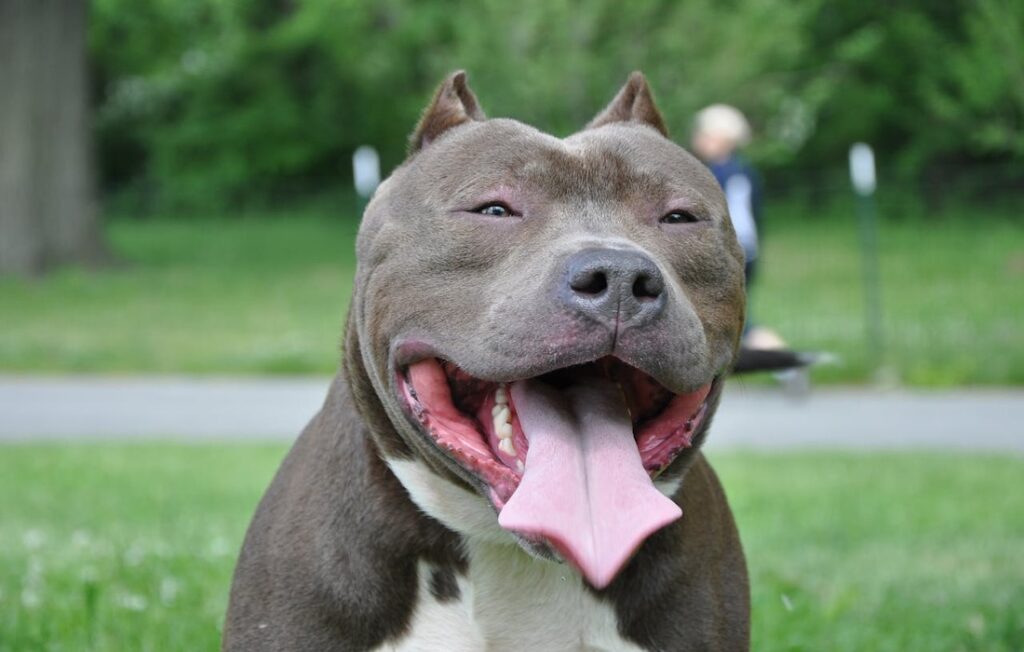

What Should I Do if My Dog Shows Aggressive Behavior?
Seeing your dog act aggressively can be alarming, but it’s important to react calmly. Panic can escalate the situation, so focus on de-escalation and safety first.
Here’s what to do:
- Stay calm: Dogs pick up on our energy. Avoid shouting or sudden movements.
- Remove the trigger: If possible, distance your dog from the person, animal, or object causing aggression.
- Redirect their focus: A simple command like “sit” or “look” can shift their attention.
- Consult a professional: A dog trainer or behaviorist can identify the root cause and create a tailored plan to address it.
Remember, aggression is often a symptom of an underlying issue, not the problem itself. If you’re not sure where to start, this resource on dog behavior modification can help you take the first steps toward resolution.
Positive Traits of Aggressive Breeds
Aggressive dog breeds often carry a stigma, yet they possess qualities that can make them incredible companions and working dogs when properly guided. These breeds are known for their strength, intelligence, and deep bonds with their families. Understanding these positive traits, will helps us appreciate their potential and make sure they thrive in the right environments.
Loyalty and Protective Nature: Emphasize how these traits can be assets with proper guidance
Dogs like Rottweilers and Dobermans are known for their unshakable loyalty and protective instincts. These traits stem from centuries of breeding for work that required guarding and watching over loved ones. When you bring one of these dogs into your home and treat them as part of the family, they’ll return the favor with unwavering devotion.
Protective dogs can serve as natural guardians. They are often on alert for unfamiliar sounds or people, making them exceptional at deterring intruders. However, this protective nature can become problematic without the right guidance. Training is key to teaching them when their instincts are needed and when to remain calm.
- What can owners do?
- Teach clear command responses such as “leave it” or “stay.”
- Introduce them to varied environments to reduce reactivity to new stimuli.
- Reinforce positive behavior to curb unnecessary guarding tendencies.
With proper training, their loyalty and protectiveness become invaluable assets. For more on managing protective dog breeds, this article on guard dog breeds and their protective nature sheds light on their potential as loving protectors.
Intelligence and Trainability
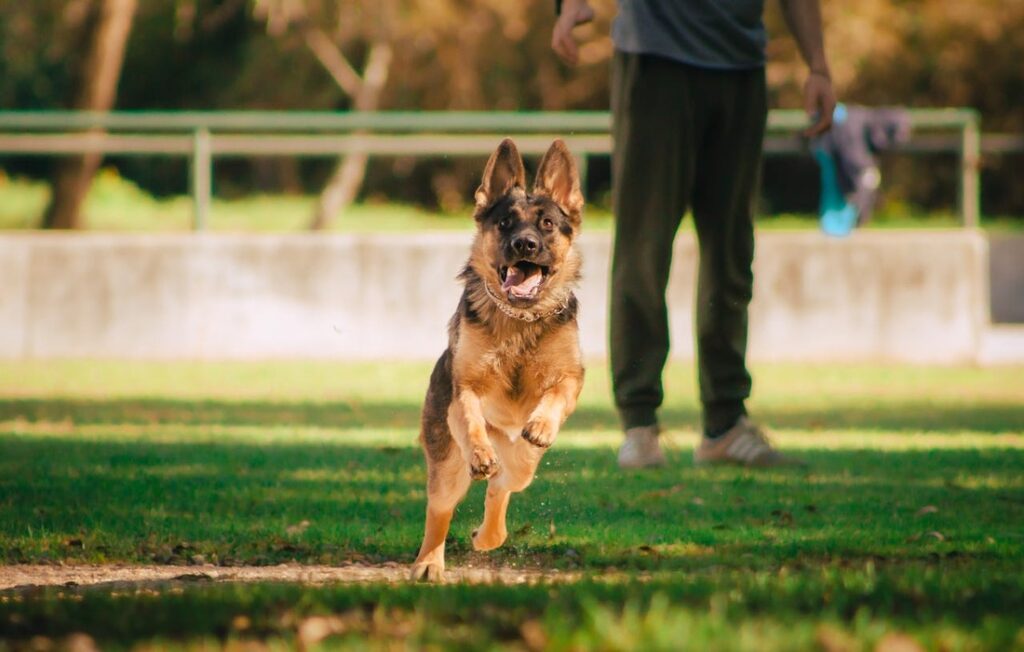

German Shepherds and Dobermans rank high in intelligence and are two of the most trainable dog breeds. Their eagerness to learn combined with their sharp minds makes them ideal for tasks requiring focus and precision. Whether it’s obedience training, agility courses, or specialized tasks, these dogs excel when given challenges that exercise their brains.
Dobermans, for instance, are often called “Velcro dogs” due to their desire to stay close to their owners. This loyalty makes them responsive to commands and willing to please. German Shepherds, on the other hand, are problem-solvers and can handle complex tasks with ease. But with great intelligence comes the need for mental stimulation. A bored German Shepherd or Doberman can quickly turn to destructive behaviors.
Effective training tips for intelligent breeds:
- Use puzzle toys or interactive games to keep their minds engaged.
- Enroll them in dog sports like obedience trials or scent work.
- Maintain consistency in training methods—they thrive on structure.
If you’re curious about comparing their intelligence and training abilities further, this resource on German Shepherds vs. Dobermans offers interesting insights into their unique strengths as working companions.
Versatility as Work Dogs: Aggressive Breeds in Police, Rescue & Therapy
Aggressive breeds like German Shepherds, Dobermans, and even Rottweilers have proven their worth in numerous work roles. Their combination of strength, intelligence, and loyalty makes them some of the most versatile canine professionals. For example:
- Police Work: German Shepherds are widely used in law enforcement for tasks like apprehending suspects, detecting drugs, or patrolling public spaces. Their sharp instincts and fearless nature are unmatched in these roles.
- Search and Rescue: Dobermans, with their agility and focus, are excellent at finding missing persons in challenging terrains. Their loyalty ensures they remain dedicated until the job is finished.
- Therapy Dogs: While it may surprise some, breeds typically associated with aggression can also serve as comforting therapy dogs. Their ability to bond deeply with their handler makes them ideal companions for emotional support.
The work ethic of these breeds cannot be overstated. It’s their innate desire to work alongside humans that has earned them a place not only as protectors but also as lifesavers and providers of comfort.
If you’d like to learn more about how these breeds contribute to society, check out The Versatile Roles of Canine Professionals for examples that might surprise you.
Final Thoughts
Aggression in dogs isn’t about their breed—it’s about the experiences we give them. Genetics might play a role, but training, socialization, and a caring environment are far more influential in shaping our dog’s behavior. All breeds, even those labeled as “aggressive,” have the potential to be loving, loyal, and well-behaved companions when guided responsibly.
Your journey as a dog owner starts with understanding your dog’s needs and investing in their well-being. Whether it’s seeking professional training, addressing health concerns, or providing early socialization, these efforts create happier, safer relationships. It’s important to remind that every dog is different, and to prioritize responsible ownership over stereotypes, ensuring every dog—and owner—has the tools to succeed.

